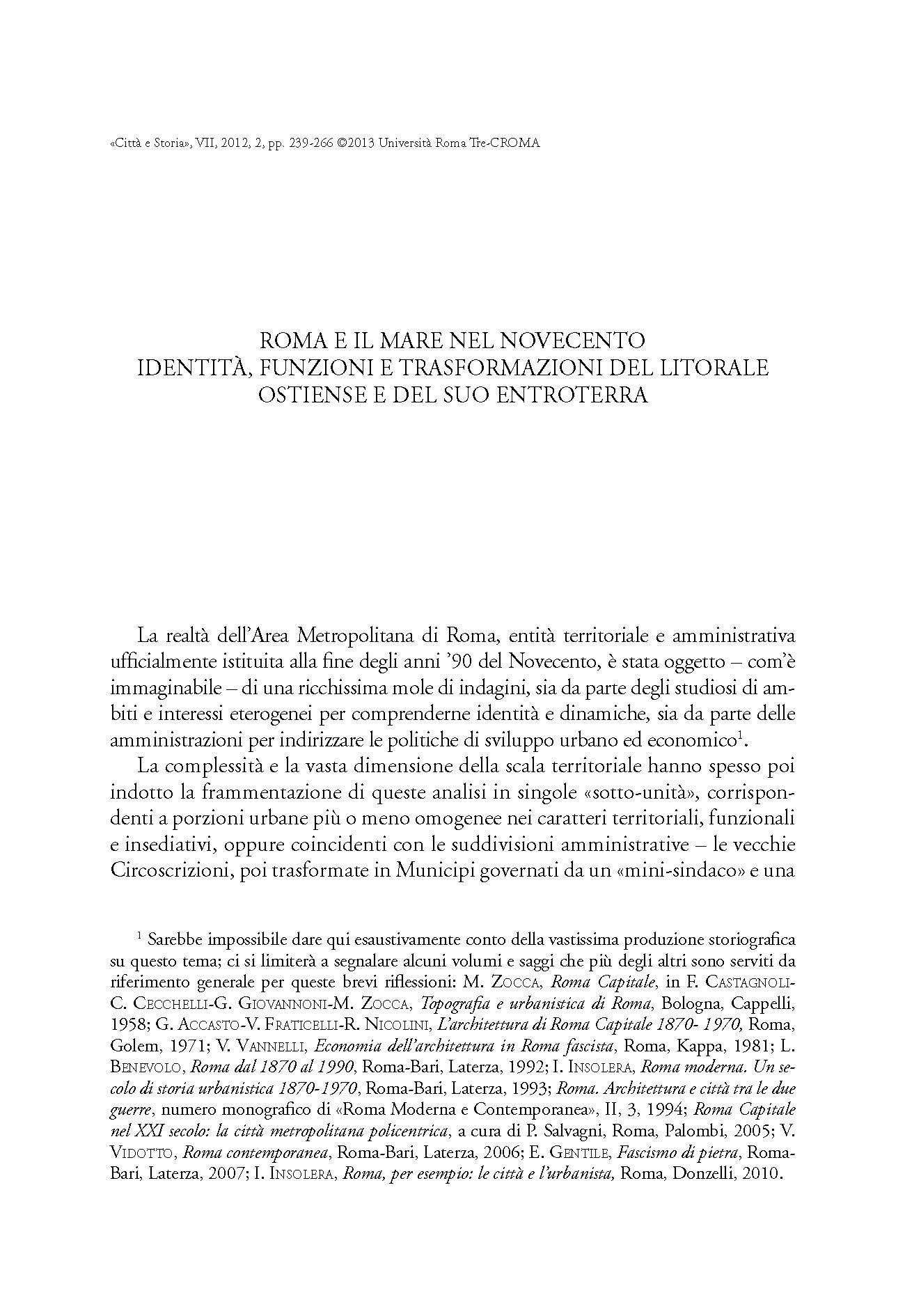Roma e il mare nel Novecento: identità, funzioni e trasformazioni del litorale ostiense e del suo entroterra
6,00 €
The Metropolitan Area of Rome is a territorial and administrative institution established at the end of the 1990s; it’s a wide and complex territory, made up by parts very different one from each other in morfology, functions, settlements. Among them, the Roman coast and its inland are a proper “city within a city”, which – starting from its re-foundation not far from the ancient Roman Ostia – during the twentieth century has assumed different identities, growing up unruly through cycles of development and crisis. Those of the identity, functional and urban evolution of the Ostiense coast and of the relationship of Rome to the sea are complex issues, that still need to be developed. This area was at first a seaside resort, then a garden city in the years before and after World War I; a modern rationalist city during the fascist era; a place of Dolce Vita after the World War II; a suburb deformed by speculation and threatened by crime in the 1970s and 1980s; and finally a seaside resort again, in the 1990s. It’s a complex territory, indeed, with its independent identity but, at the same time, inextrica- bly linked to – and dependent from – a bigger one, a metropolis as Rome is. That’s why it’s a very interesting case study: it allows to analyze the processes of urban development on a small – but significant – scale, framing them in a wider and more complex history as the one of the Rome.
The Metropolitan Area of Rome is a territorial and administrative institution established at the end of the 1990s; it’s a wide and complex territory, made up by parts very different one from each other in morfology, functions, settlements. Among them, the Roman coast and its inland are a proper “city within a city”, which – starting from its re-foundation not far from the ancient Roman Ostia – during the twentieth century has assumed different identities, growing up unruly through cycles of development and crisis. Those of the identity, functional and urban evolution of the Ostiense coast and of the relationship of Rome to the sea are complex issues, that still need to be developed. This area was at first a seaside resort, then a garden city in the years before and after World War I; a modern rationalist city during the fascist era; a place of Dolce Vita after the World War II; a suburb deformed by speculation and threatened by crime in the 1970s and 1980s; and finally a seaside resort again, in the 1990s. It’s a complex territory, indeed, with its independent identity but, at the same time, inextrica- bly linked to – and dependent from – a bigger one, a metropolis as Rome is. That’s why it’s a very interesting case study: it allows to analyze the processes of urban development on a small – but significant – scale, framing them in a wider and more complex history as the one of the Rome.

